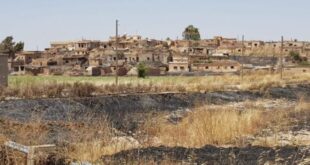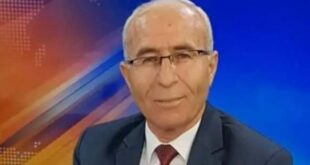By George Jahn
VIENNA – AP — U.N. nuclear agency samples taken from a Syrian site suspected of being a secretly built reactor have revealed new traces of processed uranium, the agency reported Thursday. A separate report by the same organization — the International Atomic Energy Agency — noted a significant slowdown in Iran’s efforts to expand its uranium enrichment program.
The U.N. Security Council has slapped sanctions on Iran for not freezing enrichment, which can be used to make both nuclear fuel and the core of warheads. The report did not suggest any reason for the slowdown. But agency chief Mohamed ElBaradei said earlier this week that the reason appeared to be “political” — indicating that Iran may be waiting for conciliatory signals from the new U.S. administration, which has said it is ready to break with past American policy and talk directly with Iran on nuclear and other disputes.
Both reports — meant for restricted release Thursday only to the 35 nations of the IAEA board — were obtained by The Associated Press ahead of a board meeting starting March 2 that will have the nuclear activities of the two Mideast nations on its agenda. The two documents painted a generally disheartening picture of the nuclear agency’s efforts to probe the Iranian and Syrian nuclear programs. Tehran says its nuclear activities are peaceful, while Damascus denies hiding any nuclear program.
On Iran, the report “regrettably” noted Tehran’s “continued lack of cooperation” in agency efforts to investigate suspicions the Islamic Republic had at least planned to make nuclear weapons. It also said Iran continued both uranium enrichment and building a heavy water reactor that will produce plutonium — like enriched uranium, a possible component of nuclear warheads. The Syria report noted Syria’s refusal to allow agency inspectors to make follow-up visits to sites suspected of harboring a secret nuclear program despite repeated requests from top agency officials. The brevity of the reports — the one on Iran ran five pages, the one on Syria was just three — reflected the lack of progress in the separate agency probes.
Still, a senior U.N. official who asked to remain anonymous in exchange for commenting on the restricted reports, described as significant the find of new uranium traces from samples taken during a one-off visit in June to the Al Kibar site bombed in 2007 by Israeli jets. The first minute traces of processed uranium from those samples were found late last year. The official said additional analysis had found 40 more uranium particles, for a total of 80 particles. Additionally, the official said, experts were analyzing minute traces of graphite and stainless steel found at and near the site, although he cautioned it was too early to say whether they were related to nuclear activity.
Inspectors at the Al Kibar site were known to be looking for graphite, an element in the type of North Korean prototype that the United States says the Syrians were trying to build with help from Pyongyang. On Iran, the agency said that Tehran was now fully operating 3,936 centrifuges to enrich uranium at its cavernous underground facility at Natanz, a city about 300 miles (500 kilometers) south of Tehran — only 164 more than at the time of its last report in November.
But it continued building hundreds more centrifuges and linking them into the configurations used for enrichment, said the IAEA. Tehran has announced a target of 9,000 centrifuges by the end of this for what it says is a large-scale nuclear program meant solely to power reactors. However, independent experts have noted that the Islamic Republic may be running out of the raw uranium it imported decades ago needed to create the feedstock for enrichment — something diplomats have confirmed to The Associated Press.
With uranium imports banned under Security Council sanctions on Tehran and its domestic mining possibilities limited, the diplomats have warned that it may try in the near future to undercut the sanctions and import the material illegally. The diplomats demanded anonymity in exchange for discussing the sensitive topic. To date, Iran had enriched more than 1,600 pounds (over 800 kilograms) of low-enriched uranium suitable for nuclear fuel, the report said. U.N. officials have said that Tehran would have to produce less than twice that to begin enriching it to the weapons-grade level needed to produce a warhead while other experts have given even lower amounts.
The report on Iran, which also went to the Security Council, complained both about Iran’s stonewalling on its alleged nuclear weapons plans and experiments and its general refusal to give the IAEA greater inspecting rights. “A number of outstanding issues … give rise to concern and … need to be clarified to exclude the existence of possible military dimensions to Iran’s nuclear program,” it said. “For the agency to be able to address these concerns and make progress in its efforts to provide assurance about the absence of undeclared nuclear material and activities in Iran, it is essential that Iran … provide the information and access requested by the agency.”
Check Also
The Assyrian Democratic Organization condemns the Syrian regime’s attacks on Daraa Governorate
31-07-2021 At a time when the country is experiencing an unprecedented crisis economic, services, and …
 Assyrian Democratic Organization ADO
Assyrian Democratic Organization ADO






